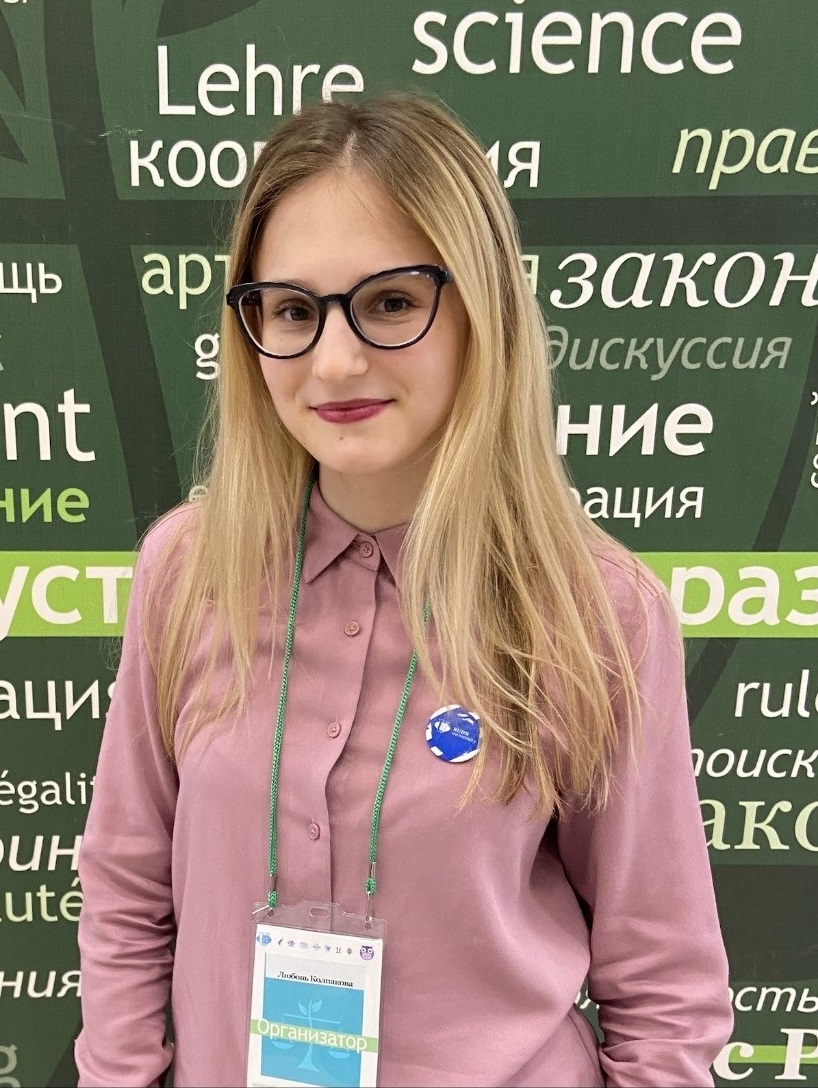"Jurisprudence is a dynamic science, it requires development in step with the times," - Lyubov Kolpakova, student at Institute of Law RUDN University

Modeling in law is a topic not even all lawyers know about. Tell us, what is it?
If you've ever entered into a contract or been a party in court, you've probably googled "service contract template" or "sample lawsuit." So, the result of that search was one example of patterns in the law. In simple words, modeling in law is the construction of certain patterns, templates, by which a certain information-legal result is constructed. Examples of such models can be model treaties, model laws ("templates" of laws in certain areas, which individual states or subjects can take as a basis and with their help form their own legislation).
What and how does modeling in law predict?
Model building in law can help predict anything. For example, in the field of crime investigation, it will not only help to simulate the situation that happened at the scene of the crime, but also to suggest to the investigators the course of the offender's future actions and, as a consequence, to find his location.
Modeling in law solves a very wide range of problems: from speeding up the decision-making process by employees of legal and judicial bodies to making legal services cheaper for citizens and simplifying the work of lawyers. The object of legal modeling is the sphere of social relations, in which the modeled legal regulations are to be implemented.
How exactly will computer algorithms help lawyers make decisions and predictions?
When modeling moves to the level of computer algorithms, new opportunities emerge for lawyers. A computer program is able to process a large amount of data, build an algorithmic model, and produce an informative result. For example, a program can be loaded with a large amount of jurisprudence for a specific period of time, and it will model the most likely decision of the court on their basis. This can help both ordinary citizens, who need to calculate their chances of winning, and professional judges in making the final verdict.
Algorithms may just as well be able to predict, on the basis of modeling, the amount of court costs or estimate the risk of recidivism for a particular convicted person.
Why is it important to introduce computer technology into the field of law?
Jurisprudence is a dynamic science, it requires development in step with the times. The introduction of computer technology is the most important and unavoidable process for all spheres of our life. In jurisprudence it is necessary at least because computer technologies greatly simplify the solution of technical and monotonous tasks, make it possible to minimize paperwork, automate and raise the efficiency of law-enforcement bodies. For the legal community this is an opportunity to accelerate and optimize the solution of some tasks, which usually take several hours, and with the introduction of computer technology will take less than a minute. For ordinary citizens it will make it easier and cheaper to solve court disputes, which do not require a large amount of legal knowledge and skills.
How did I find out about the research paper contest?
I saw an entry in the group news about student events. I adore scientific competitions and conferences, and when I realized that I could participate personally in such a major event in Novosibirsk - I immediately lit up. During 2 years of pandemic such possibility did not exist - it gave me additional stimulus.
When you applied for participation, did you expect to make it to the final?
Despite the fact that I did my best to prepare a high-quality application and send a good and interesting research to the contest, of course, I was worried - the selection was strict. From more than 3 thousand applications to the finals selected about 350. And when I saw myself in the list of finalists, I was smiling at the top of my mouth and jumping with happiness right in a full subway car.
RUDN University summed up the results of the competition among scientific student societies and scientific circles. The GreenLab of the Institute of Ecology became the best Student Research Society, the second place was taken by the Institute of Foreign Languages, and the third place - the Faculty of Humanities and Social Sciences.
There are approximately 1,600,000 children in Russia with confirmed attention deficit hyperactivity disorder. The necessary therapy is not always available to their families due to cost or the lack of specialized centers nearby. Teachers and students at RUDN University and Altai State University have developed a special app for these children that increases attention and reduces anxiety using the color photostimulation method.
Student science and popularization tour club has been operating at the Institute of Environmental Engineering for five years now. It was established under the auspices of the GreenLab Student Scientific Society.
RUDN University summed up the results of the competition among scientific student societies and scientific circles. The GreenLab of the Institute of Ecology became the best Student Research Society, the second place was taken by the Institute of Foreign Languages, and the third place - the Faculty of Humanities and Social Sciences.
There are approximately 1,600,000 children in Russia with confirmed attention deficit hyperactivity disorder. The necessary therapy is not always available to their families due to cost or the lack of specialized centers nearby. Teachers and students at RUDN University and Altai State University have developed a special app for these children that increases attention and reduces anxiety using the color photostimulation method.
Student science and popularization tour club has been operating at the Institute of Environmental Engineering for five years now. It was established under the auspices of the GreenLab Student Scientific Society.